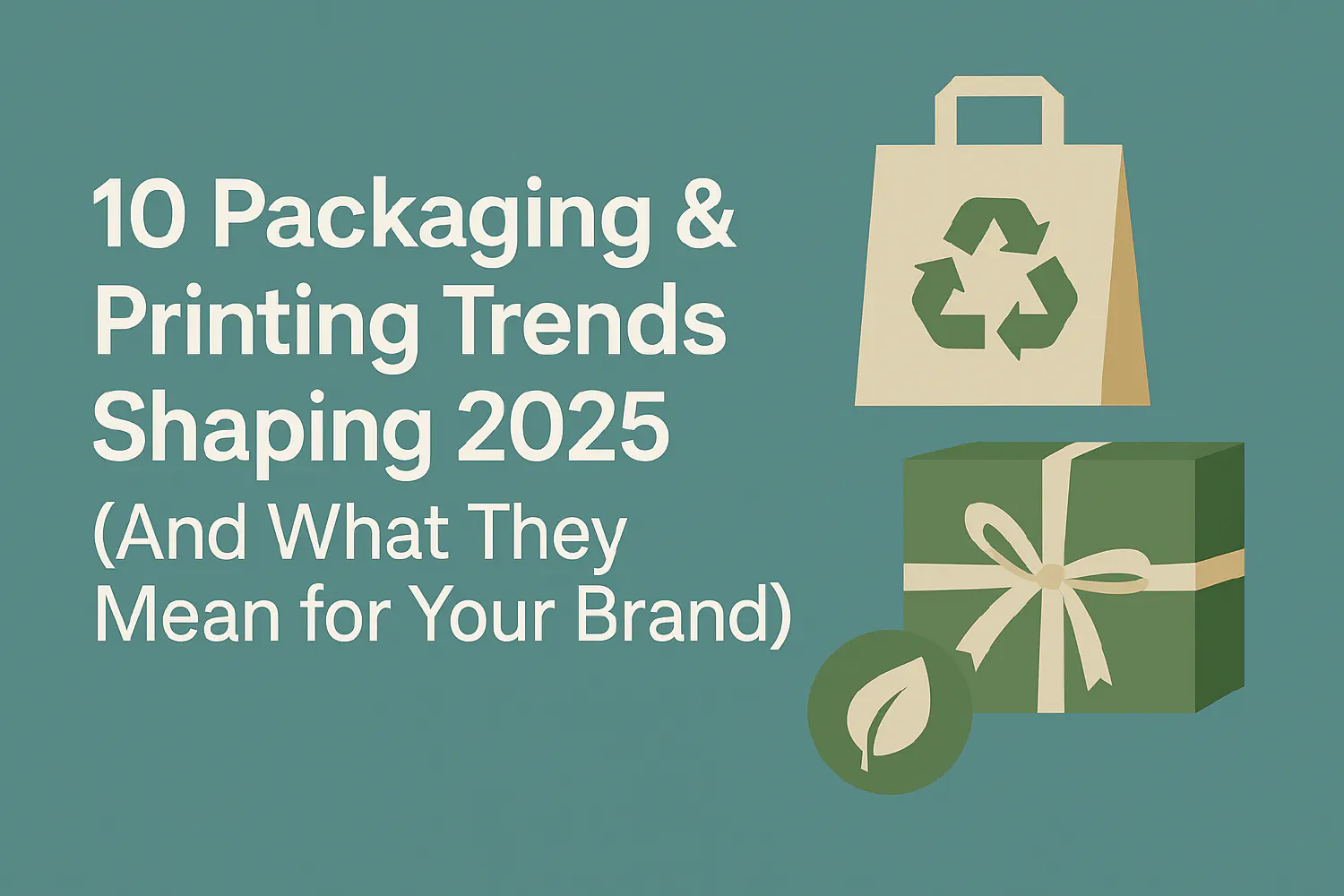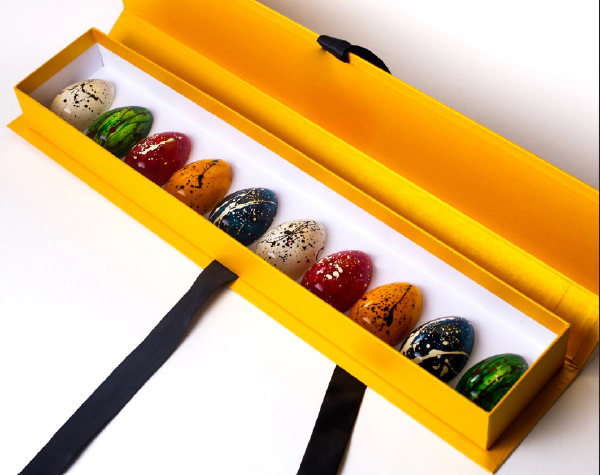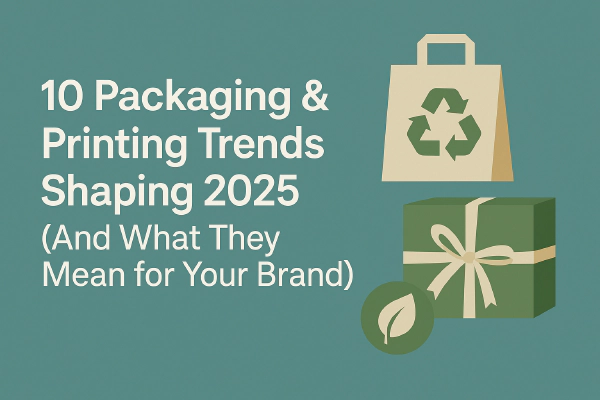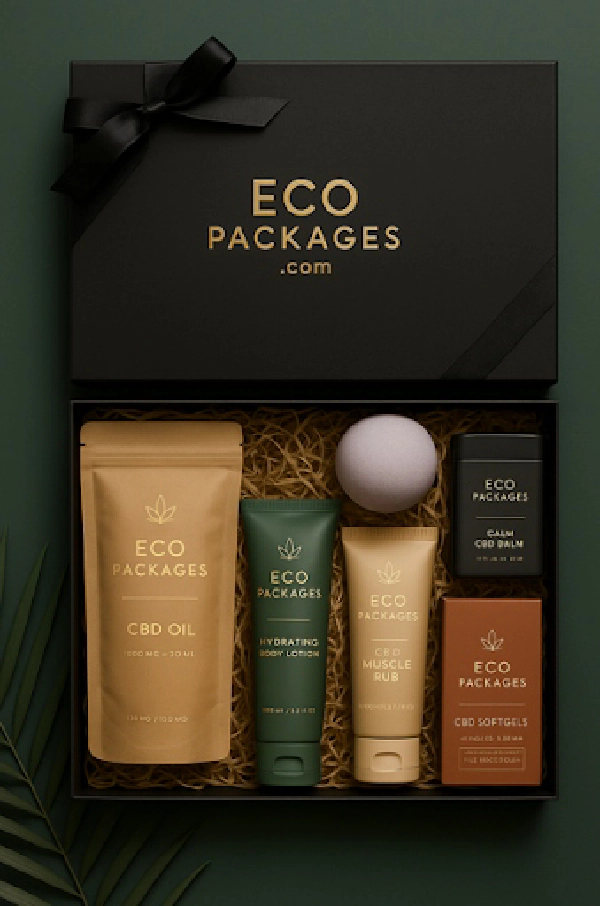Packaging is no longer just about wrapping products—it’s about storytelling, sustainability, and creating memorable experiences. Whether you’re a business owner, designer, or supplier, keeping up with packaging trends can help you stay ahead of competitors and build stronger connections with customers.
At Eco-Packages, we believe that understanding the latest data and consumer behavior can turn packaging from a simple necessity into a growth driver. Below, we break down the 10 must-know packaging and printing trends in 2025—and how they impact your brand.
1. North America Still Leads, But Asia-Pacific is Catching Up
- The global custom packaging market was valued at $43.8B in 2023 and is projected to reach $63B by 2030.
- North America controls over 35% of the market, driven by strong branding and consumer goods.
- Asia-Pacific’s eCommerce boom is pushing its share toward 41%, making it the fastest-growing region.
Takeaway: Brands selling globally need to prioritize packaging designs that appeal to diverse markets—especially in Asia.

2. Food & Beverage Packaging Dominates
- Valued at $385B in 2023, food and beverage packaging leads the global market.
- Consumers demand ready-to-eat meals, safe packaging, and convenient, on-the-go formats.
- Flexible packaging (like pouches) is seeing massive growth due to convenience and recyclability.
Takeaway: If you’re in F&B, focus on flexible, safe, and recyclable packaging.
3. Paperboard Remains King
- Paperboard accounts for 31.8% of global packaging material value.
- It’s used in everything from flour and cheese packaging to fast-food wraps and medical containers.
Takeaway: Paperboard remains the most eco-friendly and versatile material, making it a top choice for sustainable packaging solutions.
4. Sustainable Packaging on the Rise
- The market value for sustainable packaging is expected to hit $490B by 2034.
- Consumers are willing to pay more for compostable or biodegradable solutions, but affordability still matters.
- 50% of buyers say they’ll pay a premium for eco-friendly packaging, though most cap it at 3% extra.
Takeaway: Sustainability is a growth driver, but balancing it with affordability is key.
5. Luxury Packaging Embraces Eco Design
- Luxury packaging is projected to reach $17.7B in 2024.
- High-end brands like Apple are removing plastics and switching to fiber-based alternatives.
Takeaway: Eco-friendly luxury packaging proves that sustainability can be high-end without sacrificing style.
6. Labels Get Smarter (and Stickier)
- Pressure-sensitive labels own nearly 45% of the market.
- Digital label printing is growing at 6.39% CAGR.
- Industries like alcohol, cosmetics, and chemicals rely on durable, tamper-proof labels.
Takeaway: Labels are evolving beyond information—they’re now essential for product security and branding.
7. Consumers Demand Transparent Labels
- 76% of grocery shoppers want clean, transparent labels.
- QR codes and digital tags are increasingly used to show sourcing and ethical practices.
- 67% of consumers don’t trust vague “eco” claims due to greenwashing.
Takeaway: Be clear, honest, and specific with packaging claims.

8. Smart Packaging Gains Ground
- Smart packaging (QR, RFID, NFC) is growing at 4.5% CAGR, projected to reach $38B by 2033.
- It enhances product traceability and provides interactive consumer experiences.
Takeaway: Smart packaging builds consumer trust and improves logistics.
9. Automation Transforms Packaging
- 91% of North American packaging companies have adopted automation.
- Robots handle everything from sealing and labeling to palletizing and warehouse logistics.
Takeaway: Automation cuts costs, speeds up production, and minimizes errors.
10. AI Defines the “Perfect Package”
- AI in packaging is projected to grow from $2.6B in 2023 to $7.3B by 2033.
- Brands use AI for predictive maintenance, design personalization, and workflow efficiency.
- AI-driven design can boost sales by 70% by aligning with consumer preferences.
Takeaway: AI is the future of smart, data-driven packaging.
Final Thoughts: Data Meets Design
Packaging is evolving fast—driven by sustainability, automation, and consumer expectations. For businesses, this means rethinking packaging as not just protection but as a marketing tool, brand statement, and sustainability commitment.
At Eco-Packages, we help brands design custom, eco-friendly packaging that balances cost, function, and design—while aligning with future trends.
👉 Explore our packaging solutions





